Our times are the times of greed, of self-indulgence.
Herod is dancing in Chambliss Giobbi’s Tanz für mich, Salome!, inspired by Richard Strauss’ opera based on the Oscar Wilde play Salome. Giobbi loved the music but has turned the story around and made Herod the one dancing. This photographic collage is filled with the image of an aging, overweight, almost naked man full of faults. He is incestuous, adulterous, and on his way to seduce his stepdaughter. For this image Giobbi used his own body as a model—a brave thing to do, since Herod is anything but handsome.
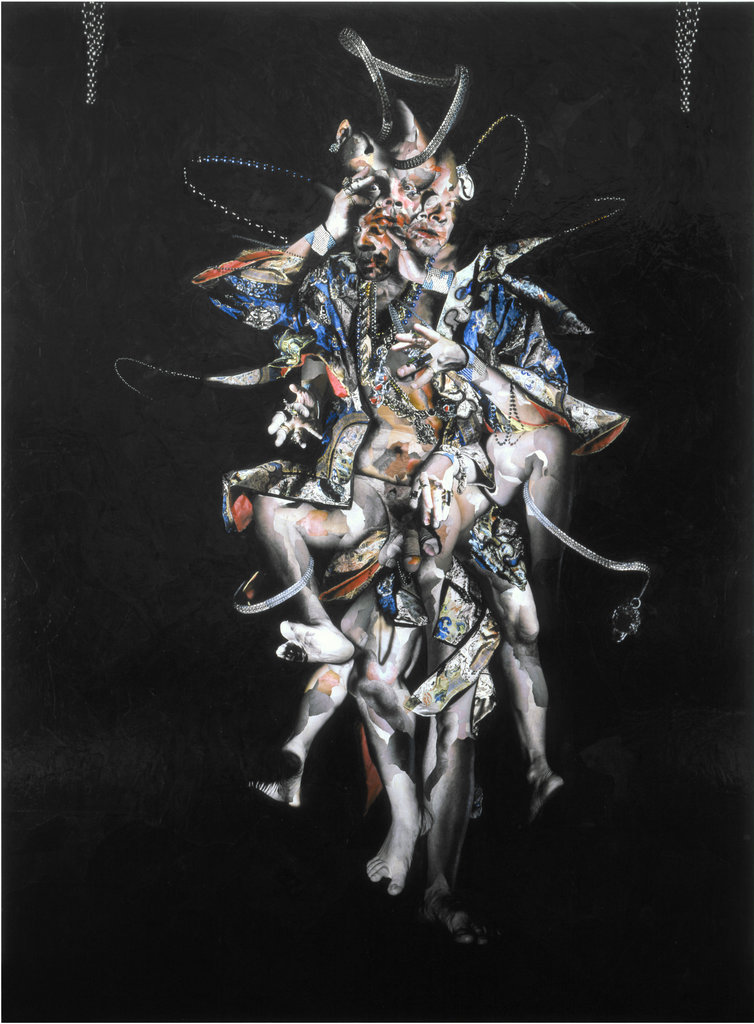 Chambliss Giobbi, TANZ FUR MICH, SALOME! Large, (Self-Portrait), 2010. Collage, Bees Wax on Aluminum Panel, 92” x 68”. Courtesy of the artist.
Chambliss Giobbi, TANZ FUR MICH, SALOME! Large, (Self-Portrait), 2010. Collage, Bees Wax on Aluminum Panel, 92” x 68”. Courtesy of the artist.
Herod is dancing. His expensive robe is open, showing most of his naked body. His head, arms and legs all have multiple images, as Giobbi uses this “cubistic” method to capture movement. The two heads betray Herod’s indulgence with food and wine. In Wilde’s play Herod invites Salome to “Dip into it thy little red lips, that I may drain the cup” and “bite but a little of this fruit, that I may eat what is left” but Salome refuses. Herod still drinks it and eats everything too. In Giobbi’s image we see the remains of red wine and food all over his face. He’s reached a point of drunkenness when reason is no longer bothering him. He touches his right head in a moment of recognition of his madness but he can’t stop dancing just now. Jewels cover his body. All of his fingers are richly ringed. One of his fingernails is badly bitten. He has worries. Metal necklaces surround his body like snakes.
Herod dances on, his many arms and legs madly moving. “Something terrible will happen” is like a refrain in the play and looking at Herod’s dance, that’s how we feel. The music is there with its visible rhythm but it is not happy at all, more like the “beating of the wings of the angel of death.” Herod’s dance has an intensity similar to one of Giobbi’s musical compositions, Khe Sanh.
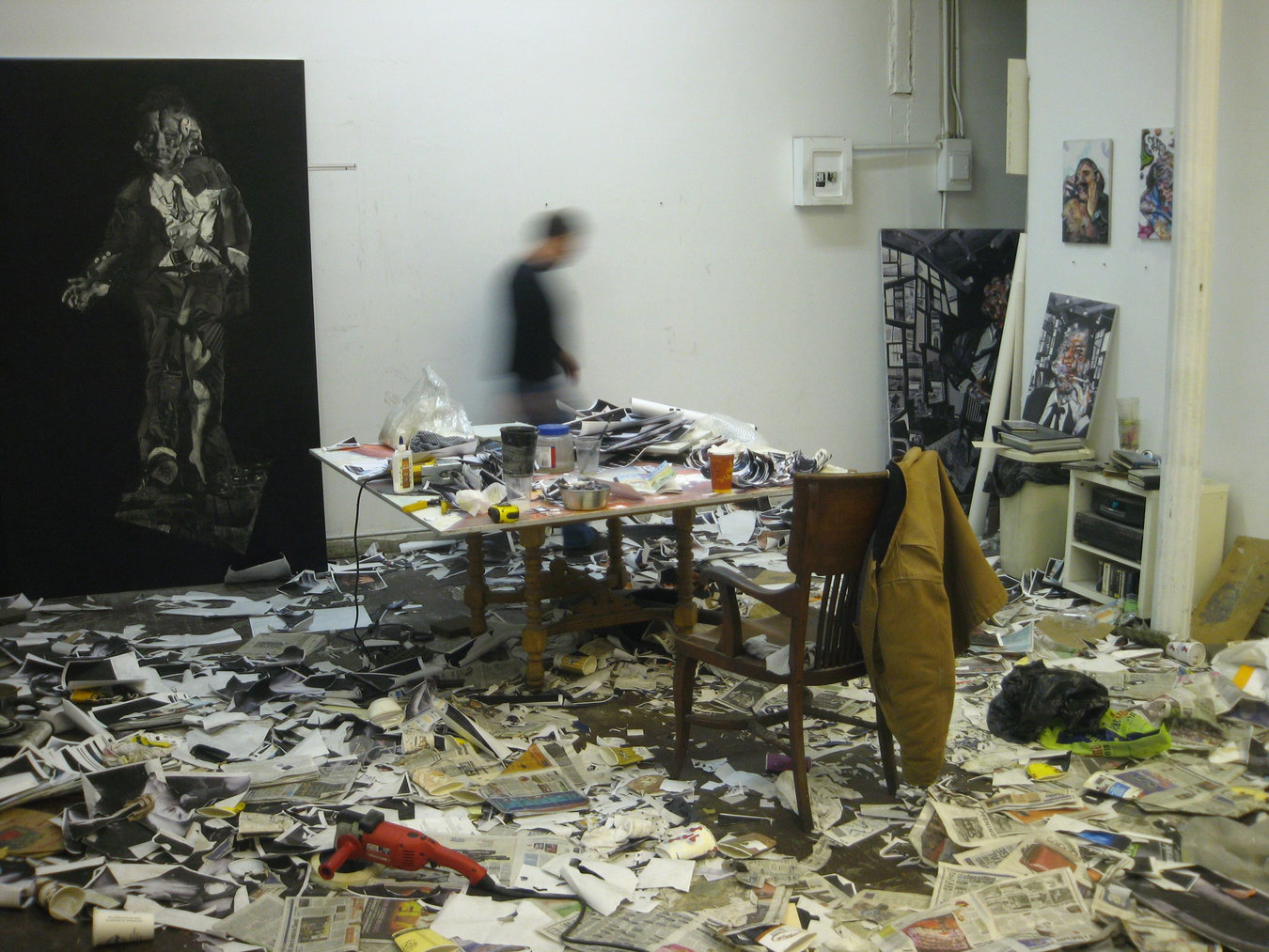 Chambliss Giobbi in his studio in New York. Courtesy of the artist.
Chambliss Giobbi in his studio in New York. Courtesy of the artist.
Giobbi was a composer of classical music before he turned to visual arts. As he said, in music “time contains every move we make, everything exists in time, develops over time. I love the idea behind cubism. I love the brutality of it, the honest kind of brutality of it. These are like getting multiple moments of time; doing the direct opposite of (music), like compressing multiple moments in one cathartic image.” In the way that music is composed of single notes, Giobbi’s collages are created from thousands of little pieces. He takes portraits of his models, sometimes as many as 300 photographs, from different perspectives, enlarges them on the computer (but doesn’t modify them) prints them and then cuts them into small pieces in order to create his compositions. He uses boards as a base and covers the finished work with a thin layer of beeswax to keep the pieces in place and so they will also “smell good.”
However fascinating his method is, Giobbi’s main focus is the character of his models: “I look for people with a free spirit and strong character; who stand for what they do with great conviction and passion.” This search often leads him to well-known personalities such as artists Joe Barnes and Alice O’Malley, filmmaker Fisher Stevens, performance-artist Penny Arcade or cult figures such as Indian Larry, the Chopper Shaman or the transgender Amanda Lepore. Modeling for Giobbi is a commitment, since it takes about a year until he reaches the point that he knows them really well and feels that he can get into their skin or more likely under their skin. That’s when he finally gets to the actual work. When there’s no secret left, he recreates the person in his work not as an idealized version but the “full truth.”
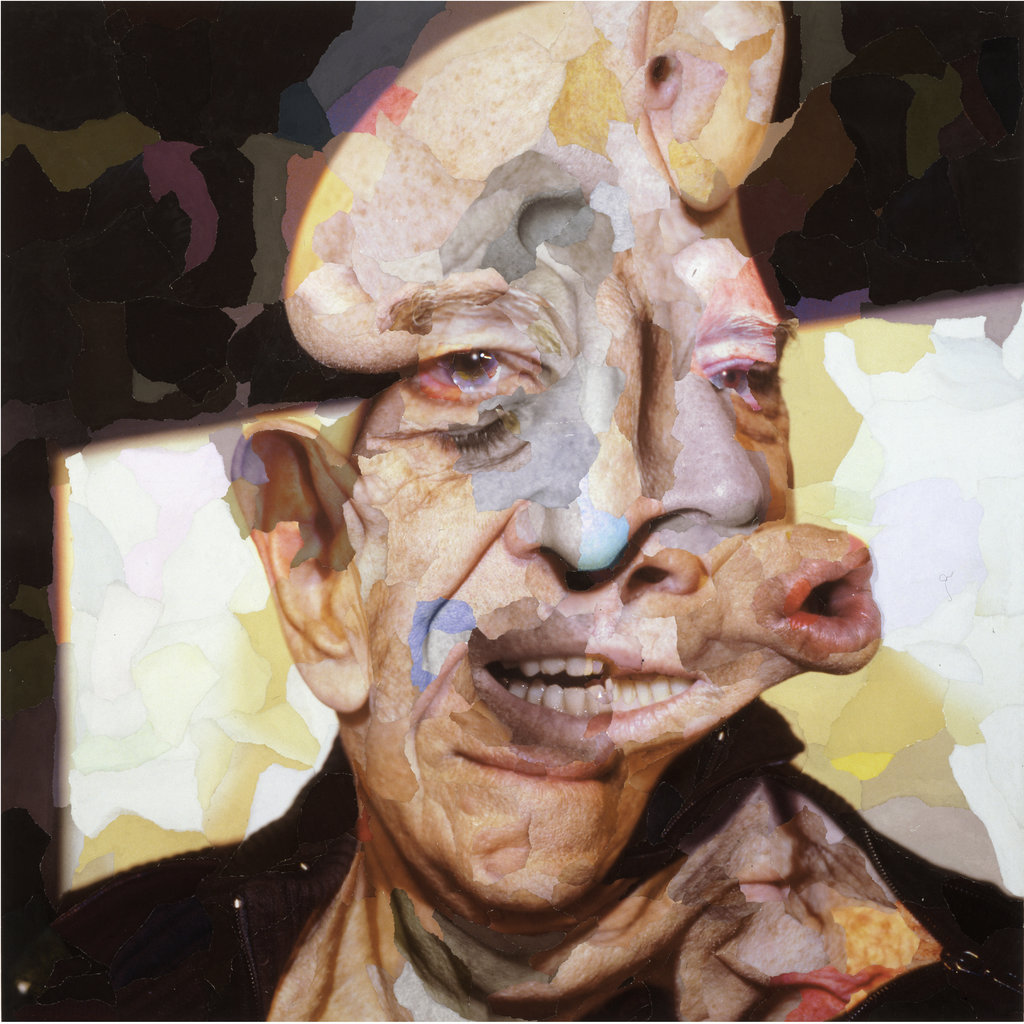 Cbambliss Giobbi, HEAD OF JOE BARNES 3, 2003. Collage, Bees Wax on Aluminum Panel, 60” x 60”. Courtesy of the artist.
Cbambliss Giobbi, HEAD OF JOE BARNES 3, 2003. Collage, Bees Wax on Aluminum Panel, 60” x 60”. Courtesy of the artist.
Joe Barnes’ blue eyes from a larger than life-size portrait look out at us from his distorted face. At first my impression of him was as a somewhat judgemental person because of his pouting second mouth, cold eyes and the fact that he seems to be talking. Not true at all. Barnes, a New York painter, creates opaque, monochromatic, meditative compositions with silent beauty in his white loft. He is soft-spoken and very gentle. In Giobbi’s portrait, Barnes’ eyes are watery because the paint and light he uses hurt them and cold because he is a very driven and disciplined artist.
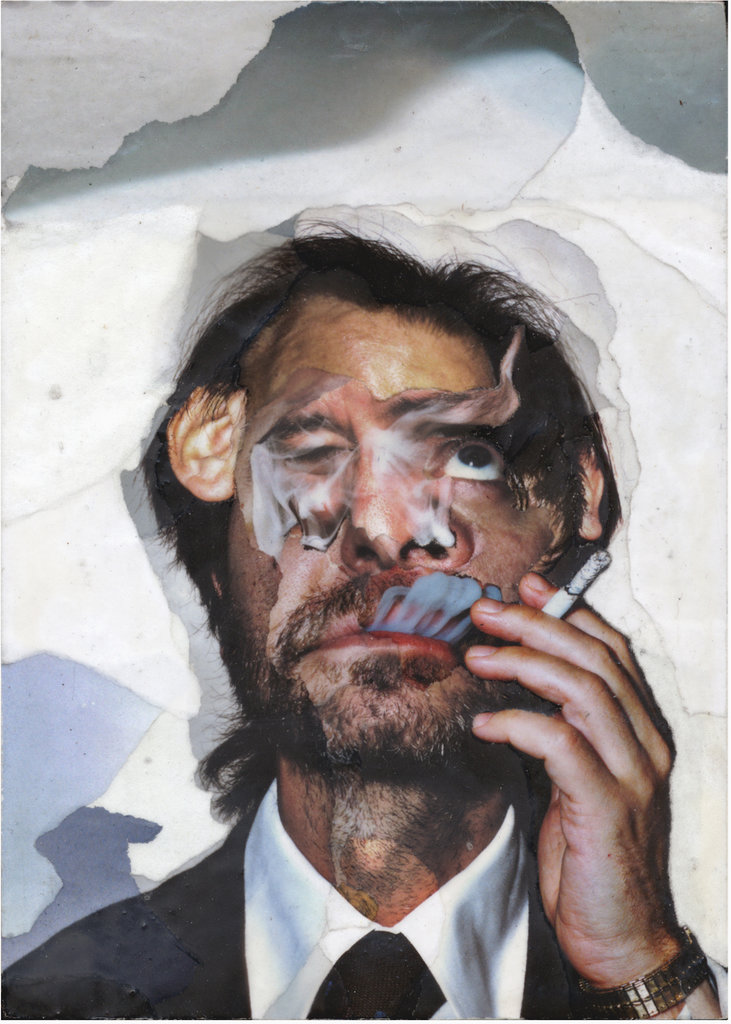 Chambliss Giobbi, TINY PORTRAIT OF FISHER STEVENS 6, 2013. Collage, Bees Wax on Masonite, 7” x 5”. Courtesy of the artist.
Chambliss Giobbi, TINY PORTRAIT OF FISHER STEVENS 6, 2013. Collage, Bees Wax on Masonite, 7” x 5”. Courtesy of the artist.
At first sight, you can see that Fisher Stevens is a nice guy, someone you would love to have a drink with. He seems to be a big dreamer whose head is in the clouds, surrounded by the artistic haze of cigarette smoke, while he tells sophisticated and funny stories about the characters he brings into life in his films. Stevens is an accomplished film persona with many movies to his credit including Short Circuit, Hackers, his documentary The Cove and his debut as the director of Stand Up Guys. When he talks about his work his favourite words are: “it was so much fun” or an “amazing experience.” Giobbi got him absolutely right: a nice, amazing, funny person.
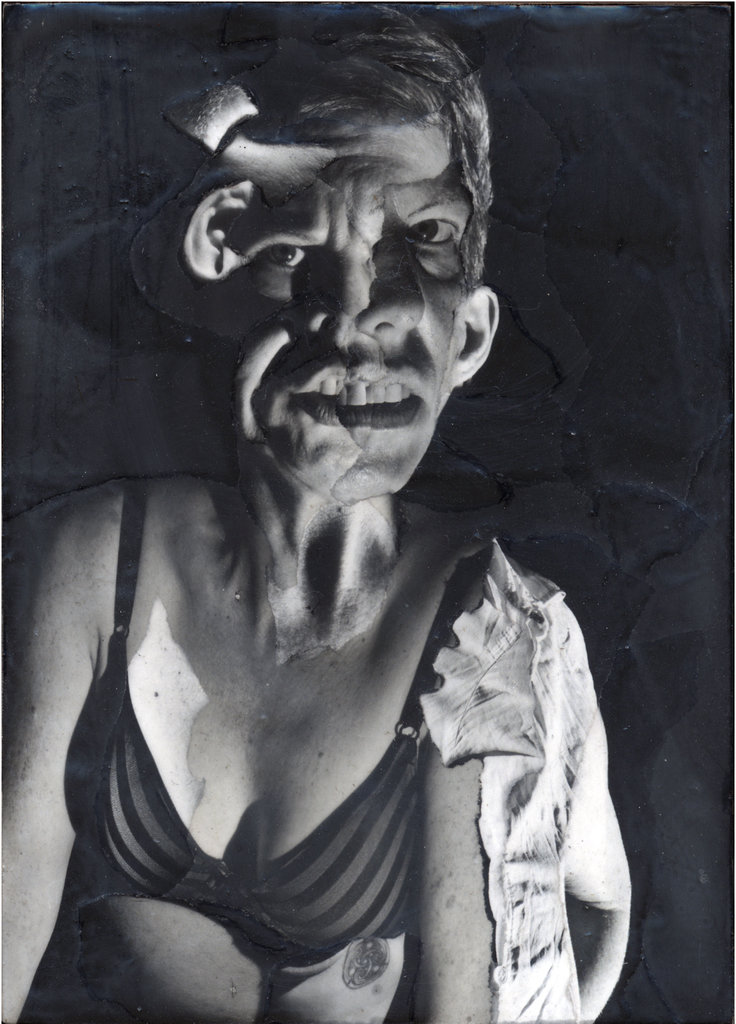 Chambliss Giobbi, TINY PORTRAIT OF ALICE O’MALLEY 7, 2013. Collage, Bees Wax on Masonite, 7” x 5”. Courtesy of the artist.
Chambliss Giobbi, TINY PORTRAIT OF ALICE O’MALLEY 7, 2013. Collage, Bees Wax on Masonite, 7” x 5”. Courtesy of the artist.
Herod is not the only one who’s dancing in Giobbi’s compositions. One of this subjects is the photographer, Alice O’Malley. She chooses her models from New York’s club culture, and always strips them down in order to recreate them in blinding whiteness. Inspired by this method Giobbi stripped down O’Malley as she dances in the collages depicting her. There is a lot of stripping down and nakedness in Giobbi’s works. His images of the seven deadly sins (SE7N) are embodiments of unfortunate passions that are pregnant with many evils. They show the aesthetics of the morbid, its cruelty and its beauty. The Seven Deadly Sins are an old theme, depicted by many artists through the centuries, Hieronymus Bosch among them. When moral codes are established, sins come into existence as well. It seems that rules irritate people to the point when they break them and they can’t resist temptations either. It doesn’t really matter if those rules come from the bible or the civil code since, as Freud wrote, “We are so constituted that we can gain intense pleasure only from the contrast, and only very little from the condition itself” (Civilization and Its Discontents, 1929). Humans are rebellious spirits. In our times, it is very difficult to rebel since there’s hardly anything left to rebel against. We don’t have any strong ideology to follow, any worthy morality to oppose. As we mirror the world we live in, our souls are fragmented and contaminated.
 Chambliss Giobbi, SE7N: PRIDE, 2011 – 12. Collage, Bees Wax on Tycore, 92” x 56”. Private Collection, Toronto.
Chambliss Giobbi, SE7N: PRIDE, 2011 – 12. Collage, Bees Wax on Tycore, 92” x 56”. Private Collection, Toronto.
Giobbi’s sinners, just like their predecessors in George Grosz’s Ecce Hommo series from the 1920s, are ugly. The obese body in Gluttony is surrounded by fast food containers while she is munching on a slice of pizza. But instead of satisfaction this abundance causes only sadness as we can see in the figure’s eyes. The man in Envy surrounds himself by walls for some privacy. He is trying to escape his public image by ripping his clothes off. He turns his back to the world, his hands held in praying position, his loneliness apparent. Faces fill all the small windows so he can’t escape the preying eyes of others. What do they envy in him? For sure, whatever position and richness he might have, it doesn’t make him happy. He is not the sinner, the onlookers are. In Pride, performer Penny Arkade is dancing in front of a mirror with transgender celebrity Amanda Lepore. Arkade, who is famous for her intriguing solo shows like Bad Reputation, Bitch!Dyke!Faghag!Whore! and always makes the “weird to win,” shows her aging body here without regret. Lepore, whose perfect female body is considered the “most expensive body on Earth” according to the money spent on plastic, happily sings and dances like there is no tomorrow. In their need for exposure Giobbi’s models become overexposed and sometimes too naked, making the viewers into voyeurs.
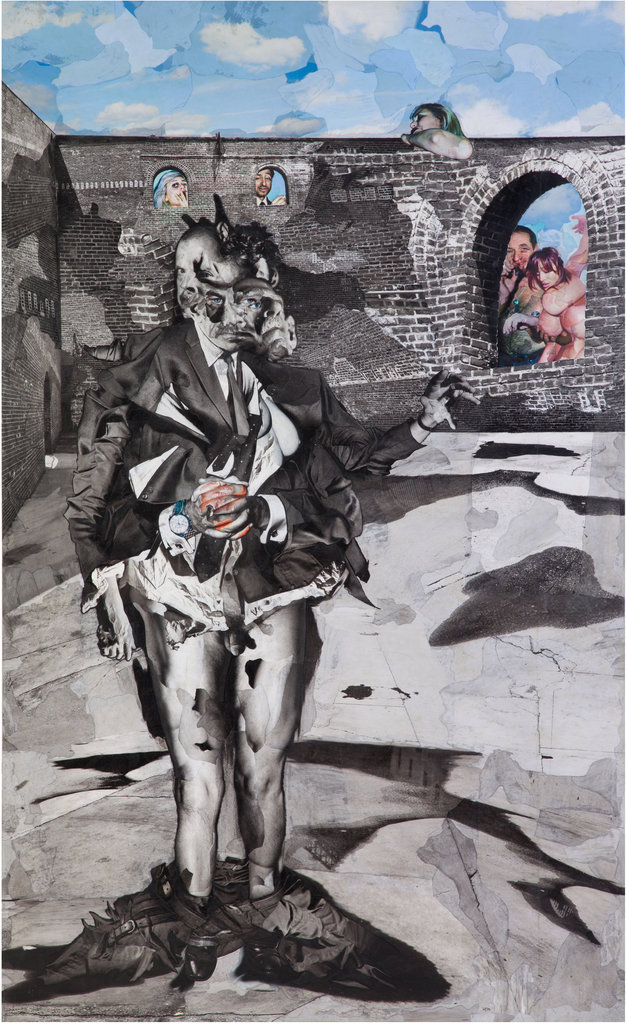 Chambliss Giobbi, SE7N: ENVY, 2011 – 12. Collage, Bees Wax on Tycore, 92” x 56”. Courtesy of the artist.
Chambliss Giobbi, SE7N: ENVY, 2011 – 12. Collage, Bees Wax on Tycore, 92” x 56”. Courtesy of the artist.
Herod is still dancing in his Dionysian haze. Does he really dance for Salome? I don’t think so. His dance is no longer filled with desire but becomes a bottomless pit of lust, a burning itch, more like a disease than a pleasure. It is greed that moves him, wanting more and more, never to be satisfied. This modern version of Herod is being consumed by his own needs. Giobbi’s characters are unmasked guests at the masquerade of our times, and his Herod, this overfed, oversexed antihero, leads this mad cavalcade.
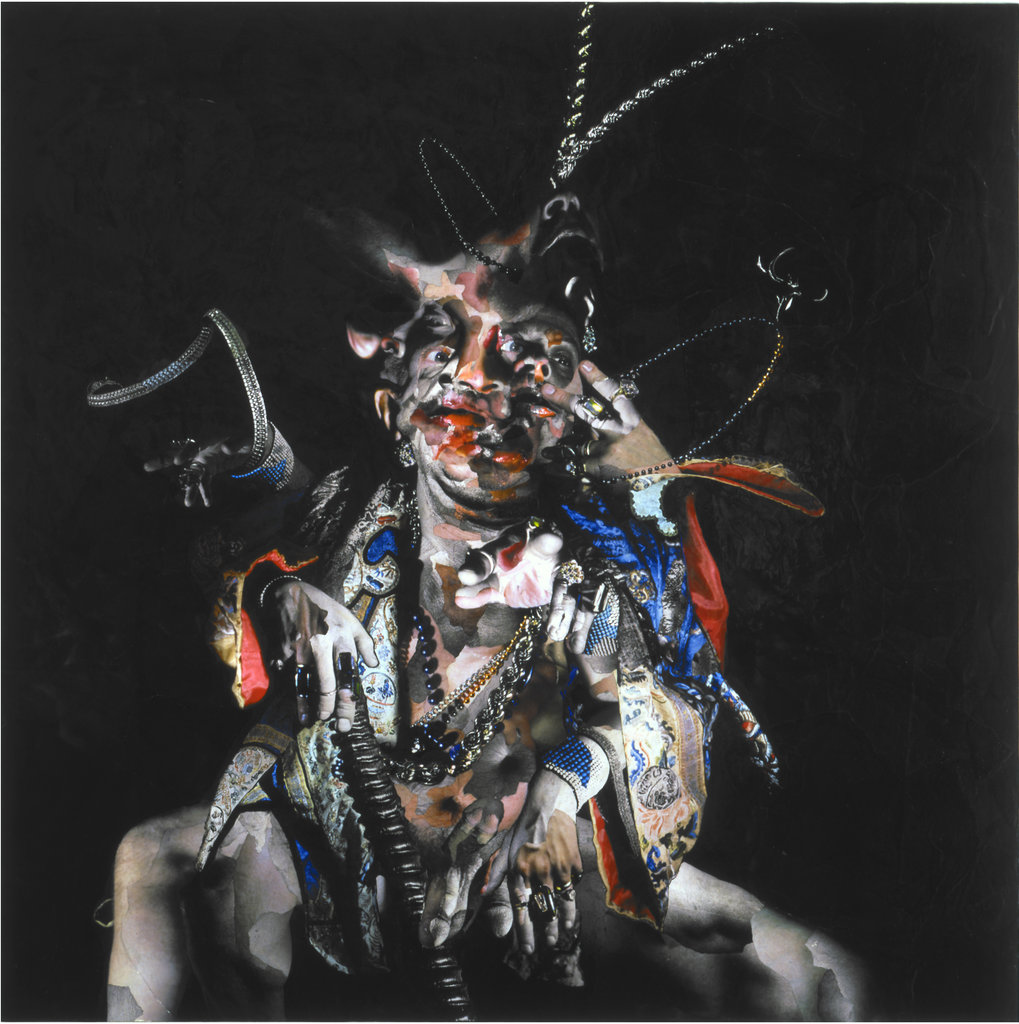 Chambliss Giobbi, TANZ FUR MICH, SALOME! 3, 2009. Collage, Bees Wax on Aluminum Panel, 36” x 36”. Courtesy of the artist.
Chambliss Giobbi, TANZ FUR MICH, SALOME! 3, 2009. Collage, Bees Wax on Aluminum Panel, 36” x 36”. Courtesy of the artist.
By Emese Krunák-Hajagos
*Chambliss Giobbi was part of the exhibition Go Figure in De Luca Fine Art / Gallery, Toronto, November 8 – 30, 2013. He currently has a solo exhibition, titled American Iron, in 101 / Exhibit in Los Angeles, February 15 – March 29, 2014.
